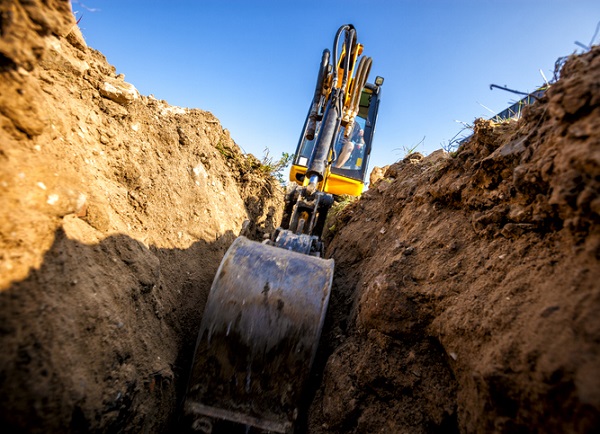Digging Near Underground Cables - A Safety Guide
Reading time: 4 minutes
What are the hazards when excavating near underground electrical cables?
Every year, around 70 people* in the UK are seriously injured from striking an underground electricity cable whilst digging. Nearly half of all cases (47%) were reported on public highways, construction sites and industrial buildings making tradespeople at extreme risk of serious injury in the workplace.
Electric cables, whether supplying power to residential buildings or industrial complexes, pose significant dangers, with voltages ranging from domestic levels to higher industrial levels. Even seemingly innocuous tasks like digging in driveways or around buildings can turn fatal if proper precautions are not taken.
When surveyed, 93%** of construction workers and industry professionals believe they always dig safely, yet nearly a third (31%) admitted to not always checking for underground electricity cables before beginning work.
Worryingly, almost one in six (15%) say if they uncovered an underground electricity cable encased in concrete, they would attempt to break them out, which could put them at immediate risk of life-threatening injuries.
Despite the perceived confidence of many construction workers in their safety practices, a considerable portion admits to not consistently checking for underground cables before commencing work.
To address this critical issue and mitigate the risks faced by tradespeople, the Energy Networks Association (ENA) has launched an impactful safety campaign under the banner, 'Think Before You Dig'. This initiative aims to raise awareness among construction workers about the perils of working near underground electricity cables.
What precautions should be taken when underground services are suspected?
For those engaged in construction activities near underground cables, adhering to a set of life-saving guidelines is paramount. The 'Plan, Scan, Think Before You Dig' approach outlined by ENA provides a comprehensive framework for ensuring safety:
Plan
-
Before commencing any excavation work, meticulous planning is essential.
-
Conduct a thorough risk assessment to identify potential hazards associated with the excavation.
-
Request location details and plans from utility companies well in advance to accurately pinpoint the position of underground equipment.
-
Utilise resources such as the LinesearchbeforeUdig website to access underground equipment plans and minimise the risk of damage.
Scan
-
Vigilance is key when scanning the work area for electrical wires or equipment. Remain vigilant for warning signs indicating the presence of underground cables.
-
Think about using a cable avoidance tool to help check the area for live electrical cables and pipes underground. This could significantly reduce the risk of striking live cables.
-
Be mindful that cables may be concealed within walls, floors, or ceilings, especially during drilling operations.
-
Familiarise yourself with the location of the main fuse box or consumer unit and know how to deactivate electricity in case of emergencies.
Think Before You Dig
-
Exercise extreme caution around underground cables, refraining from any attempt to move or tamper with them.
-
Always assume that underground cables are live, even if damaged.
-
Handle power tools with care and operate them cautiously.
-
When digging near areas where underground cables are expected, proceed by hand and watch out for marker tape or tiles indicating cable locations.
By adopting these safety protocols and cultivating a proactive safety mindset, construction workers can significantly reduce the likelihood of accidents and injuries when working near underground cables. Prioritising safety not only safeguards individual well-being but also fosters a culture of responsibility and professionalism within the construction industry.
As you embark on excavation projects in the coming months, remember to prioritise safety and adhere to the 'Plan, Scan, Think Before You Dig' guidelines provided by the Energy Networks Association. In case of any uncertainties, do not hesitate to reach out to your local electricity distribution network operator, or call 105 in Great Britain or 03457 643 643 in Northern Ireland, for safety concerns relating to the electricity network. In an emergency, always call 999 and let them know electricity is involved. For additional information on working safely near underground power lines, visit the Energy Networks Association website at energynetworks.org/thinkbeforeyoudig. Your commitment to safety can make all the difference in preventing avoidable accidents and ensuring a secure working environment for all.
*Data from the Health & Safety Executive.
**Research carried out by 3gem on behalf of the Energy Networks Association in October 2020. Total sample size was 1,000 people across the UK, aged 18 – 65.
Disclaimer: The information contained on this page is intended as an overall introduction and is not intended as specific advice from a qualified professional. Travis Perkins aims to avoid, but accepts no liability, in the case that any information stated is out of date.




